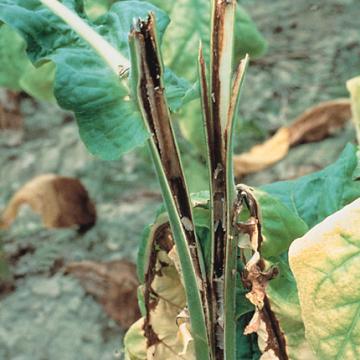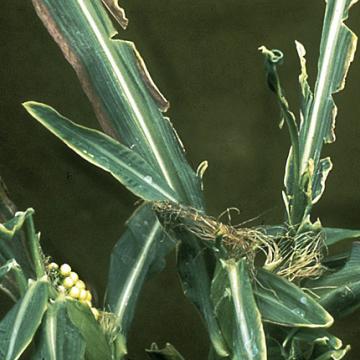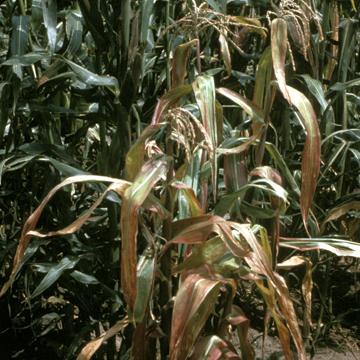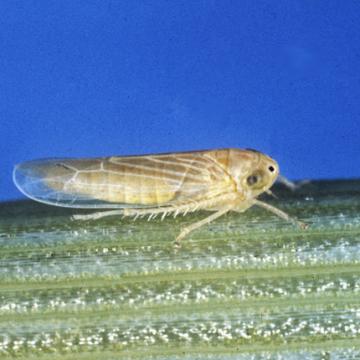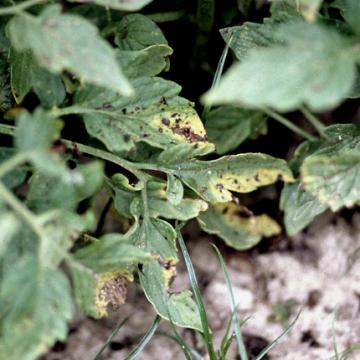DISEASE: Hollow stalk
HOST: Tobacco
Hollow stalk may appear at time of topping and suckering. Top leaves wilt and the stalk becomes bare as the disease moves downward.
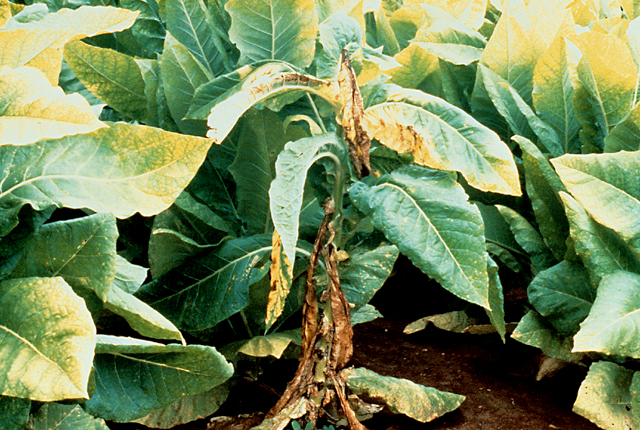
Hollow stalk | Tobacco
DISEASE: Hollow stalk
HOST: Tobacco (Nicotiana tabacum)
PATHOGEN: Pectobacterium carotovorum
PATHOGEN SYNONYM: Erwinia carotovora subsp. carotovora
SOURCE: P. Shoemaker
DISEASE: Hollow stalk
HOST: Tobacco
Infection of flue-cured tobacco stalks occur at wound sites caused by topping. After top infection, browning of pith occurs and tissues rot.
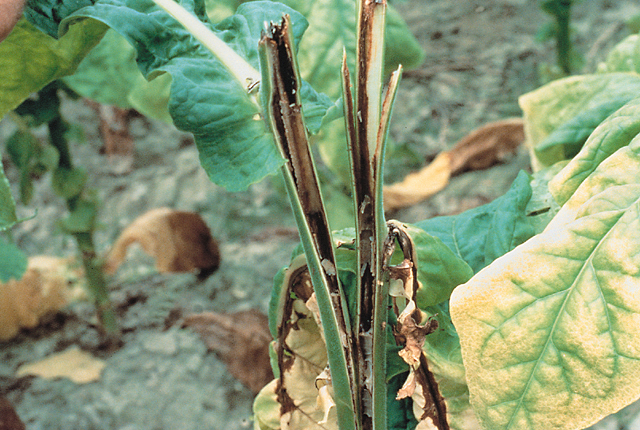
Hollow stalk | Tobacco
DISEASE: Hollow stalk
HOST: Tobacco (Nicotiana tabacum)
PATHOGEN: Pectobacterium carotovorum
PATHOGEN SYNONYM: Erwinia carotovora subsp. carotovora
SOURCE: APS
DISEASE: Maize bushy stunt
HOST: Corn (Maize)
Maize with chlorotic leaf margins and reddening of tips and margins of older leaves.
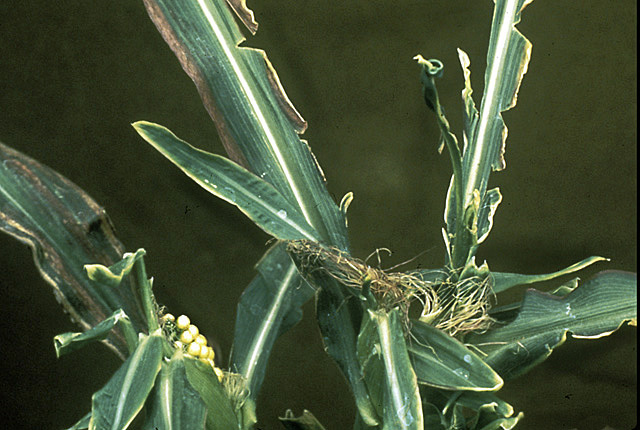
Maize bushy stunt | Corn (Maize)
DISEASE: Maize bushy stunt
HOST: Corn (Maize) (Zea mays)
PATHOGEN: 'Candidatus Phytoplasma asteris'
PATHOGEN SYNONYM: Phytoplasma Aster yellows group
SOURCE: L. Nault, M. Davis
DISEASE: Maize bushy stunt
HOST: Corn (Maize)
Late stage of disease.
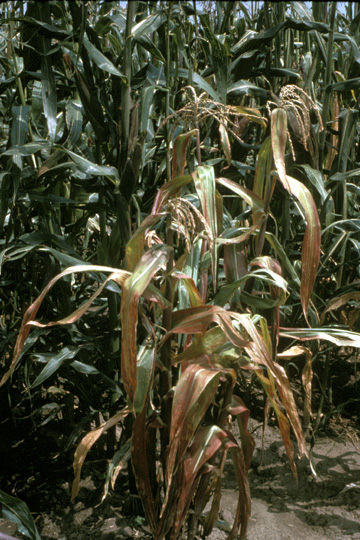
Maize bushy stunt | Corn (Maize)
DISEASE: Maize bushy stunt
HOST: Corn (Maize) (Zea mays)
PATHOGEN: 'Candidatus Phytoplasma asteris'
PATHOGEN SYNONYM: Phytoplasma Aster yellows group
SOURCE: R. Davis, M. Davis
DISEASE: Maize bushy stunt
HOST: Corn (Maize)
Dalbulus maidis, leafhopper vector of 'Candidatus Phytoplasma asteris', the cause of maize bushy stunt.
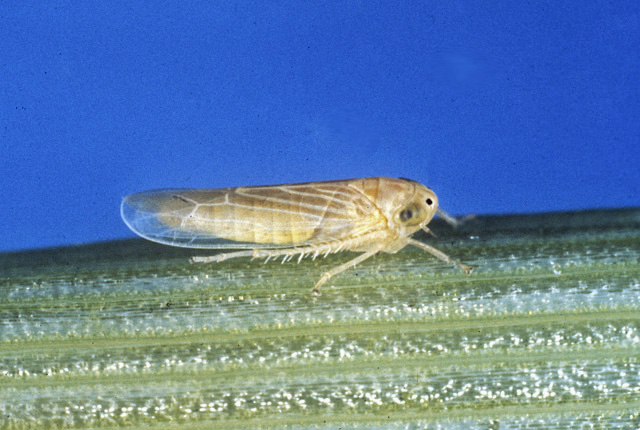
Maize bushy stunt | Corn (Maize)
DISEASE: Maize bushy stunt
HOST: Corn (Maize) (Zea mays)
PATHOGEN: 'Candidatus Phytoplasma asteris'
PATHOGEN SYNONYM: Phytoplasma Aster yellows group
SOURCE: L. Nault, M. Davis
DISEASE: Syringae leaf spot
HOST: Tomato
Leaves with brown necrotic lesions and chlorotic margins. Symptoms vary greatly among cultivars. Some have black or brown lesions with bright yellow, chlorotic areas and others do not have yellowing.
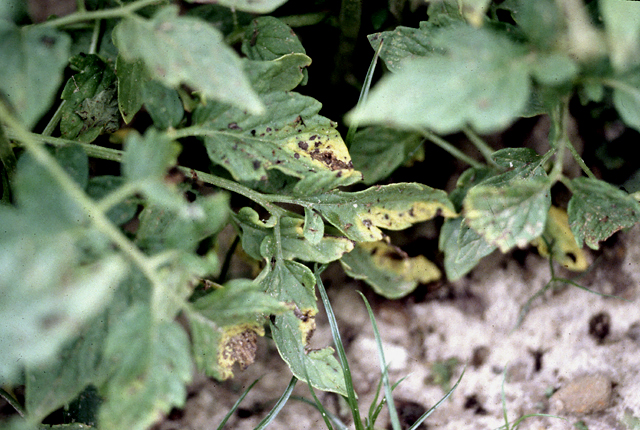
Syringae leaf spot | Tomato
DISEASE: Syringae leaf spot
HOST: Tomato (Lycopersicon esculentum)
PATHOGEN: Pseudomonas syringae pv. syringae
SOURCE: R. Gitaitis



